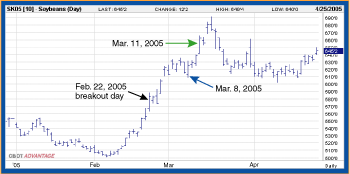Think Synthetically, Trade Globally
Synthetically Speaking
by Paul J. Kluskowski
How do you transform your premium from debit to credit? Think synthetic positions.
Ask anyone in the know and they will tell you that the risk/reward profile of a long option is limited risk with unlimited reward potential. The built-in assumption is that the premium is at risk. What if there was a way to change this? What if the premium could be transformed from debit to credit, leaving you with a risk/reward spectrum that was small gain to unlimited gain, versus small loss to unlimited gain? Impossible, you say? If you can think synthetically, this transformation is quite possible.
WHAT ARE SYNTHETIC POSITIONS?
Synthetic positions are combinations of stock or futures and options that give the risk/reward profile of a different tradable. Using synthetic positions gives us nearly limitless possible combinations, but our focus right now is to create a synthetic long call option for a credit. A long call option can be synthetically replicated with the use of a long stock position with a long put. (I should note here that there is limited downside risk with hypothetically unlimited upside reward.)
The interesting part comes when you put this on for a credit. Quite simply, you must "leg" into this position by going long the stock or future in an uptrend. Once some profit is built in, you can purchase a put option with a strike price that ensures a small profit, even if you must exercise the put. A simple stock example works like this:
1. Buy XYZ stock at 15.You now have a synthetic long call that was created for a credit. No matter what happens, you will have at least a small profit.
2. Let XYZ move to 20.
3. Buy XYZ put with a strike of 17.5 for $2 or less.
While this works with stock, it is even more applicable in the futures markets due to the much lower margin requirements to open the initial position.
THE FIRST LEG: FUTURES
Let's use a real-life example with soybeans as the underlying instrument (Figure 1). On February 22, 2005, July delivery contracts had a price range of just under $5.700 per bushel to just over $5.900. For the first leg of the synthetic option, say you went long one July 2005 contract at $5.900, near the day's high. That was a breakout day for soybeans, so it's conceivable you would be willing to go long on that day.
As time goes by, you can see the bean contract shown in Figure 1 would have treated you well. This, then, would have been the first leg.

FIGURE 1: A LONG CALL. Since February 22, 2005, was a breakout day, you decided to go long one July 2005 soybean contract. You can see that things did go your way.
Excerpted from an article originally published in the May 2006 issue of Technical Analysis of STOCKS & COMMODITIES magazine. All rights reserved. © Copyright 2006, Technical Analysis, Inc.
Return to May 2006 Contents